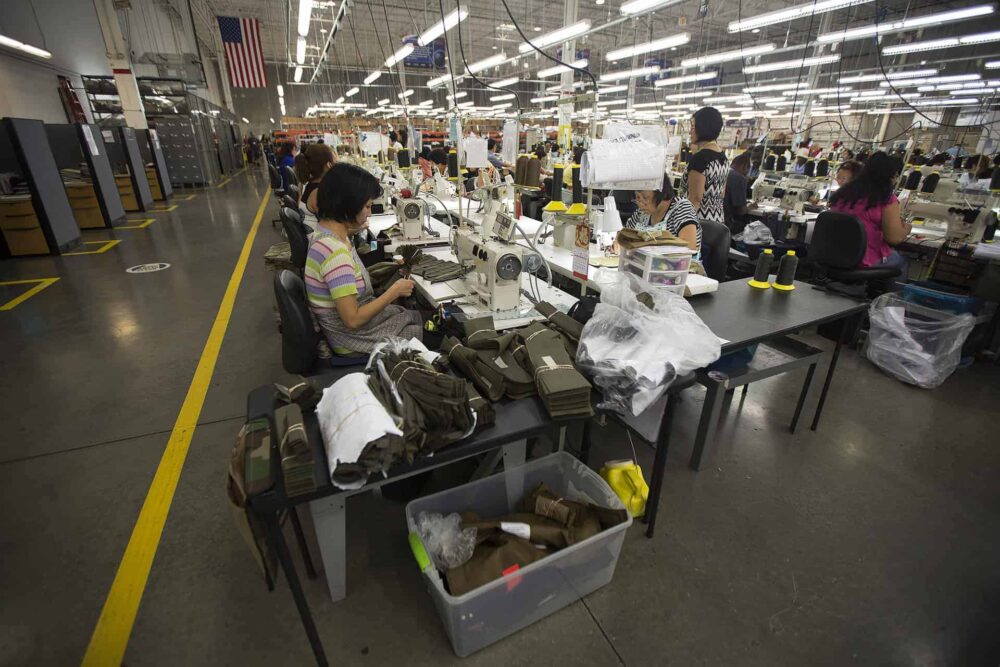How are bulletproof vests made? & what is armored clothing made of?
We get a lot of questions about how body armor and bulletproof clothing is made, so we put together this short primer on the process of turning raw materials into a vest that will stop bullets.
Step 1: Raw Materials
In order to make bulletproof clothing manufacturers start by producing fiber or filament that is lightweight but strong. One of the most well known is Kevlar®, which is produced by spinning a solid thread from a liquid chemical blend.
Another fiber, Dyneema®, is made from a polyethylene base and is manufactured by means of a gel-spinning process that combines extreme strength with incredible softness.
Step 2: Yarn Production
Large spools of the basic fiber enable manufacturers to weave those individual fibers into cords and yarn. The yarn is a long continuous length of interlocked fibers, suitable for use in the production of fabrics and sheet material.
Step 3: Sheet Materials
The yarns are then further woven into a sheet material that is capable of stopping bullets. The sheet materials are what body armor companies use to make the actual bulletproof panels. The final ballistic sheet materials are normally put on rolls around 100-200 meters (330-660 feet) in length and look like rolls of any other textile.
Step 4: Cutting The Material
Using large patterns and industrial cutting machines, multiple layers of ballistic material are cut at once. Generally, bulletproof clothing consists of front and back panels that are a slightly different shape and size. The panels used in bulletproof clothing consist of multiple layers of the basic ballistic material and extensive testing is required to identify the proper thickness of ballistic material. The thickness of the final product depends on what level of protection the manufacturer is trying to achieve.
Step 5: Sewing The Panel
The proper thickness of the fabric layers (depending on the required protection level) are assembled to create the ballistic panel. Kevlar® layers need to be stitched together to create panels.
Step 6: The Cover
The cut and sewn layers of ballistic material then need to be put into a protective envelope. This envelope or cover can be heat-sealed in order to protect the ballistic material inside against water and humidity. The sealed cover is the basic ballistic panel that provides a bulletproof vest with its bullet resistant qualities.
Step 7: Carrier
The ballistic panels are then fitted into a specially designed carrier. A ballistic carrier has pockets in which the ballistic panels can be inserted and is designed to hold the panels in proper position on the body. How is bulletproof clothing made? A carrier, plus ballistic panels together form the basic bullet resistant vest. Since the dimensions of the panels are easy to determine, it’s also possible to add panel pockets to an existing coat or jacket.
We hope that your question – how is bulletproof clothing made, has been properly answered.










i needed this for a school thing thank you.
Comment:I need it for a school and teaching
I will be coming to your school then
very interesting
A saving life like never before
can it be summarized ?
that would be very nice if it was shorter
I needed for a school textiles project, This website was 50% of my research done. thanks so much.
thanks for the A dudes
hey I really needed this thank you bodyarmornews.com
thank you I needed this for a paper
thank u
Spot on with this write-up, I honestly feel this web site needs far more attention. I’ll probably be back again to read through more, thanks for the information!
Thanks this was very helpful for school
I am looking for a marerial that is literally bulletproof that csn be made into tee shirts denims vest scarfs dresses skirts etc I want to sew a unique type of product I want to start a clothing line
Wonderful idea… I am interested in purchasing once available
This answered almost all of my school project.
This helped me with my essay, thanks!